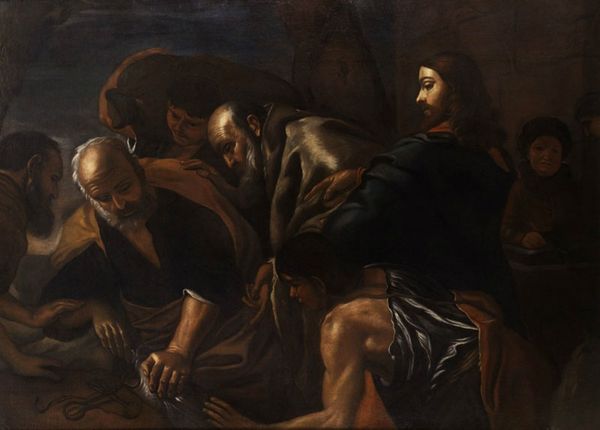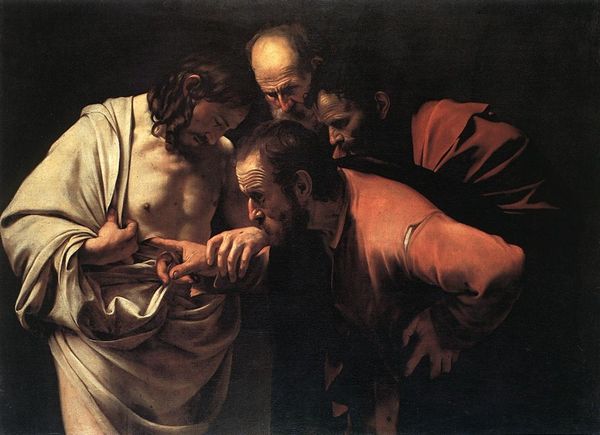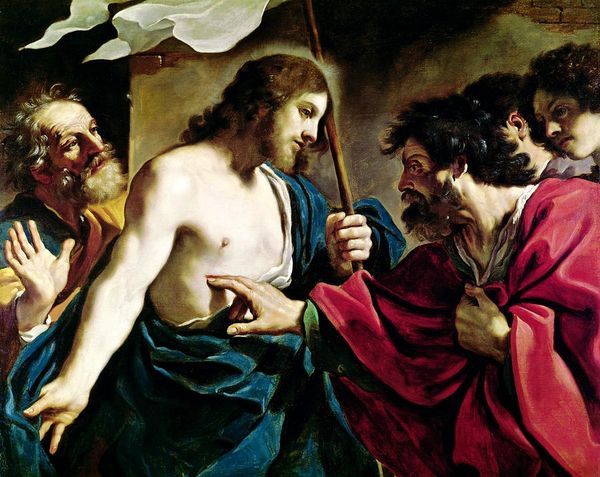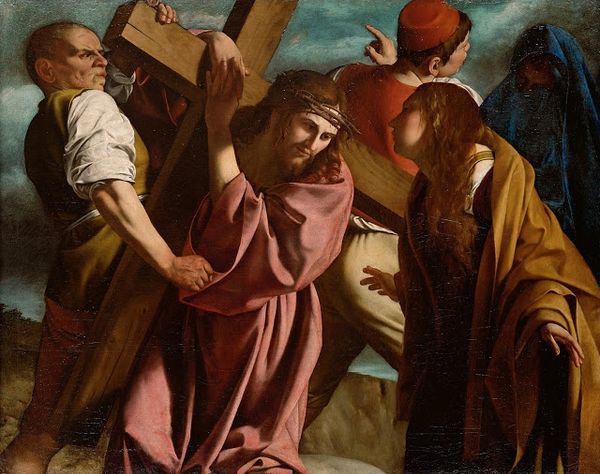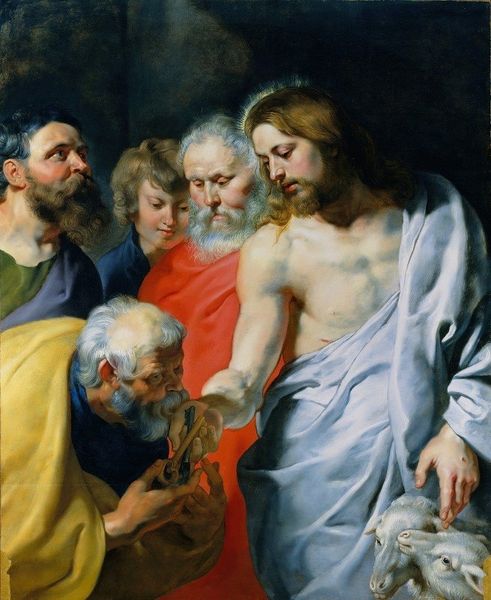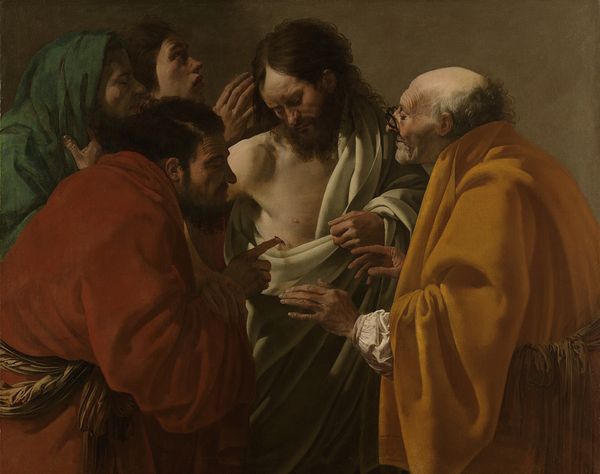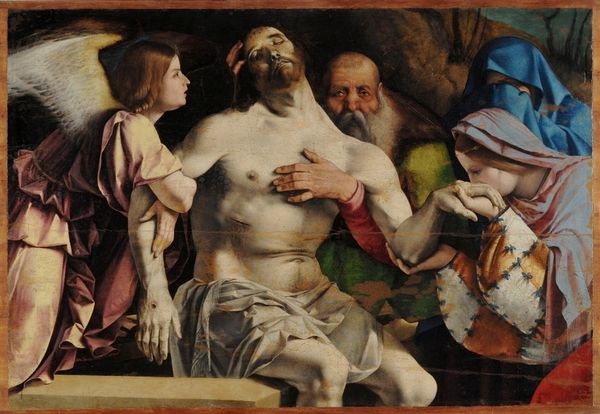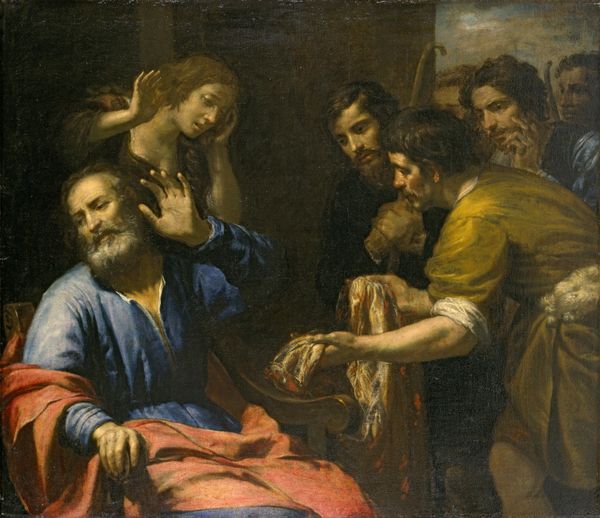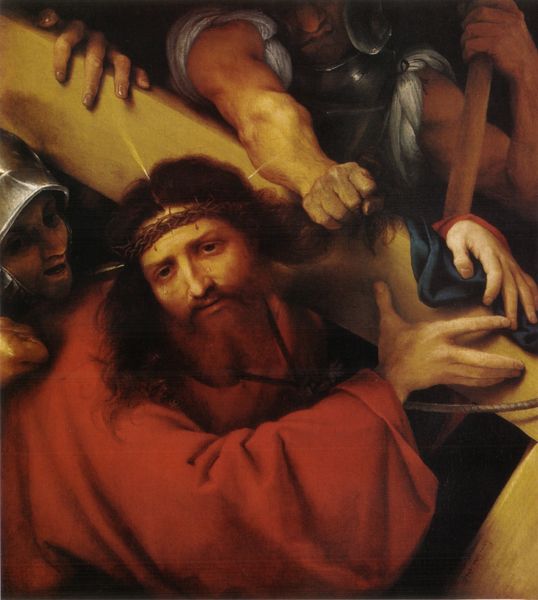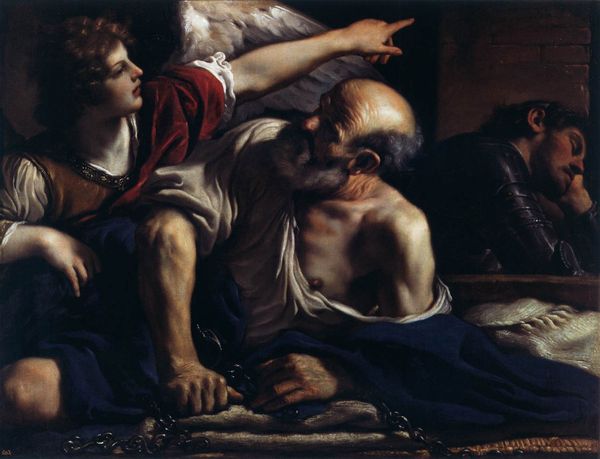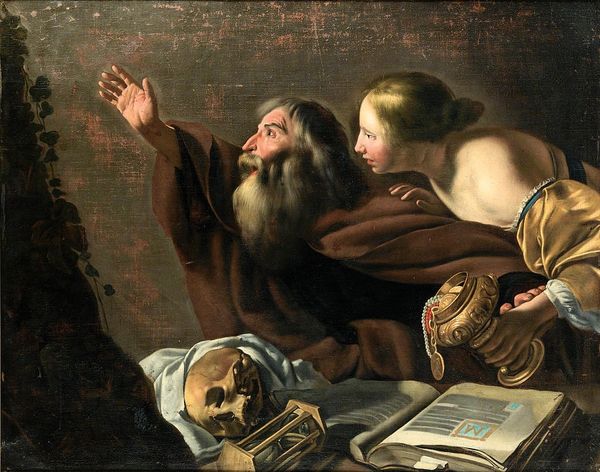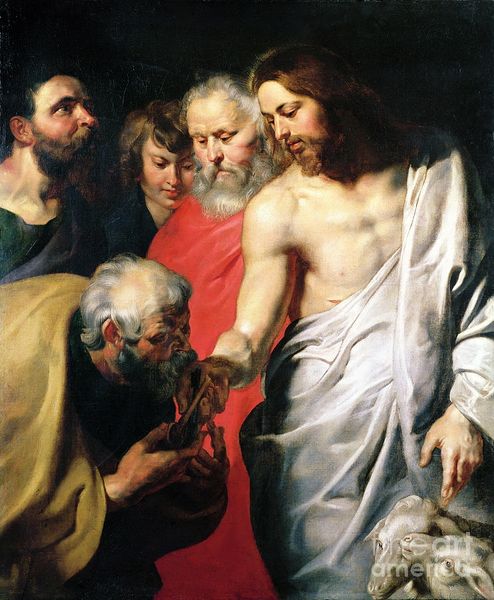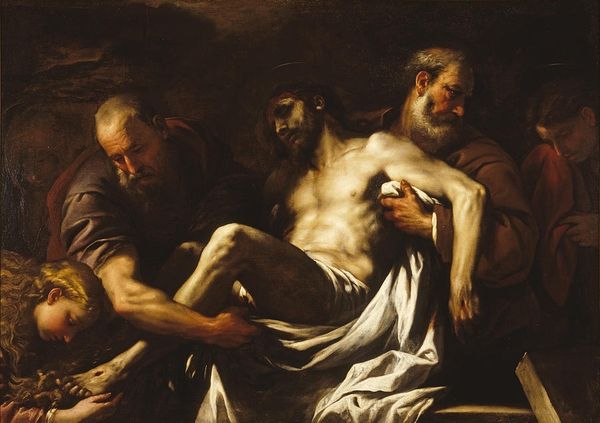
oil-paint
#
baroque
#
oil-paint
#
figuration
#
chiaroscuro
#
history-painting
#
christ
Dimensions: 154 x 222 cm
Copyright: Public domain
Curator: As we stand before this image, keep in mind this particular work, Caravaggio's "Christ on the Mount of Olives," painted around 1605, has been lost to time. What we see now is likely a reproduction, reminding us of art's fragile existence and its complex relationship to history and memory. What strikes you initially about it? Editor: The oppressive darkness. The way the figures are huddled, almost swallowed by the blackness, speaks volumes about fear, isolation, and impending doom. Even the small halo above Christ seems weak against the pervading gloom. Curator: It’s impossible to ignore the sociopolitical implications here. Caravaggio paints not just a scene of religious importance, but also one of profound abandonment. He highlights the psychological and emotional turmoil experienced by figures on the margins, facing their darkest hour—Jesus betrayed, his disciples failing him. How might his choices in composition contribute to our reading of the social themes at play? Editor: Consider the slumped postures, their faces buried or averted. The way the artist renders Peter especially—collapsed, defeated—speaks to something universally human: failure and denial. I think also about those key moments rendered with divine light that we have become accustomed to. Here, that imagery is subverted, making way for the feelings of real humanity and pain. Curator: Exactly, and Caravaggio uses light not to sanctify but to dissect and expose vulnerabilities. By dimming any angelic or bright elements from our main focal point and using a dramatic chiaroscuro effect, it is as though we are entering a space of psychological realism, mirroring, perhaps, the social struggles and inequalities prevalent in Caravaggio’s time. This would allow for the viewers in his era to personally relate to these more human renditions of traditionally saintly and unreachable images. Editor: The symbolism woven into the very fabric of the image underscores the significance of such themes: sleep representing spiritual apathy, the shadows mirroring moral ambiguity. Even if Caravaggio had not considered a "political reading," this depiction certainly offers room for analysis from diverse angles. It provides a visual space where theology meets sociology. Curator: A meeting that complicates and enriches the biblical narrative! Viewing art as both a mirror reflecting the social realities of its creation and a lens through which we can examine our own, the "Christ on the Mount of Olives," in its fragmented form, continues to resonate with pressing contemporary themes. Editor: Indeed. The haunting echo of what was lost challenges us to reflect on faith, duty, and our own capacity for resilience and, sadly, failure when confronted with darkness.
Comments
No comments
Be the first to comment and join the conversation on the ultimate creative platform.
